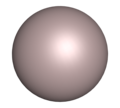 | |||
| |||
| Names | |||
|---|---|---|---|
| Other names Aluminum phosphate Aluminium monophosphate Phosphoric acid, aluminium salt (1:1) | |||
| Identifiers | |||
| |||
3D model (JSmol) | |||
| ChEMBL | |||
| ChemSpider | |||
| DrugBank | |||
| ECHA InfoCard | 100.029.142 | ||
| EC Number |
| ||
PubChem CID | |||
| RTECS number |
| ||
| UNII | |||
| UN number | 1760 | ||
CompTox Dashboard (EPA) | |||
| |||
| |||
| Properties | |||
| AlPO4 | |||
| Molar mass | 121.9529 g/mol | ||
| Appearance | White, crystalline powder | ||
| Density | 2.566 g/cm3, solid | ||
| Melting point | 1,800 °C (3,270 °F; 2,070 K) | ||
| Boiling point | Decomposes | ||
| 1.89×10−9 g/100 ml [1] | |||
Solubility product (Ksp) | 9.84×10−21 [1] | ||
| Solubility | Very slightly soluble in HCl and HNO3 | ||
Refractive index (nD) | 1.546 [2] | ||
| Pharmacology | |||
| A02AB03 ( WHO ) | |||
| Hazards | |||
| GHS labelling: | |||
  | |||
| Warning | |||
| H314, H315, H319, H332, H335 | |||
| P260, P261, P264, P271, P280, P301+P330+P331, P302+P352, P303+P361+P353, P304+P312, P304+P340, P305+P351+P338, P310, P312, P321, P332+P313, P337+P313, P362, P363, P403+P233, P405, P501 | |||
| NFPA 704 (fire diamond) | |||
| Lethal dose or concentration (LD, LC): | |||
LD50 (median dose) | 4640 mg/kg (rat, oral) > 4640 mg/kg (rabbit, dermal) | ||
Except where otherwise noted, data are given for materials in their standard state (at 25 °C [77 °F], 100 kPa). | |||
Aluminium phosphate is a chemical compound. In nature it occurs as the mineral berlinite. [3] Many synthetic forms of aluminium phosphate are known. They have framework structures similar to zeolites and some are used as catalysts, ion-exchangers or molecular sieves. [4] Commercial aluminium phosphate gel is available.


